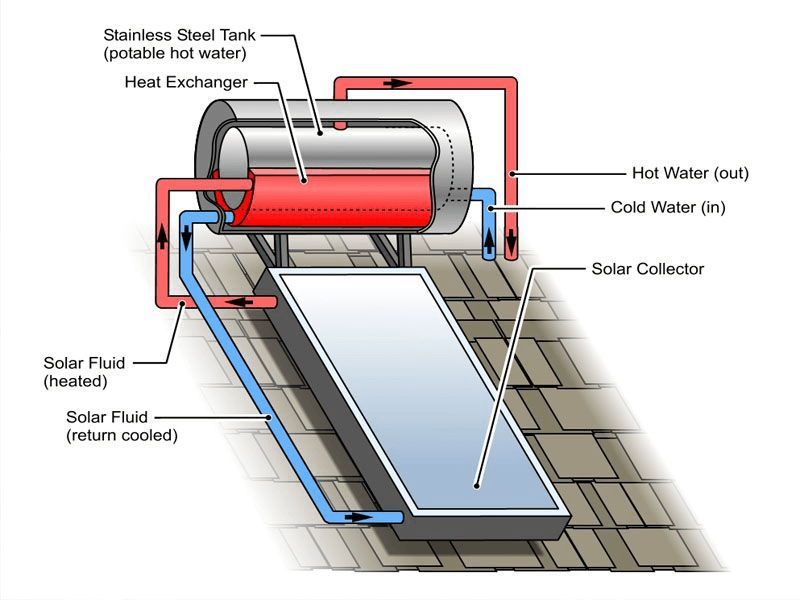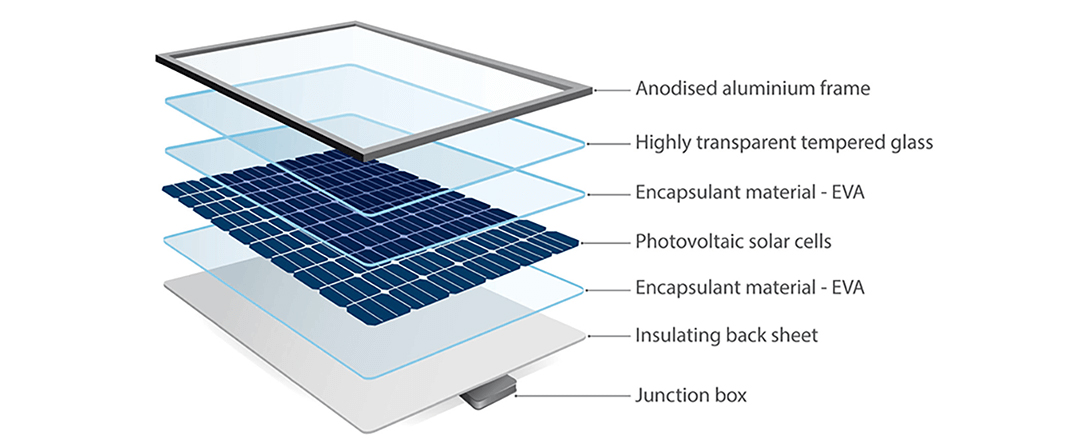Solar-powered heaters, particularly those with a single glass panel, are popular due to their eco-friendly design and energy-saving potential. The panel front of a solar heater covered with glass offers several advantages that make them appealing in certain applications. However, they come with certain challenges that may affect their efficiency and performance. This article will come to discuss the the problems faced by these systems and offer solutions separately to improve their functionality and reliability.
What is a solar-powered heater with a single glass panel?
A solar-powered heater with a single glass panel is a device that uses solar energy to heat water or air. The system typically consists of a single layer of glass, which allows sunlight to pass through and be absorbed by a heat-absorbing surface inside. This heat is then transferred to water or air, providing an eco-friendly heating solution.

What are the problems and solutions of the solar powered heater with single glass panel?
Lower Efficiency Due to Heat Loss
A primary issue with solar heaters that use a single glass panel is heat loss. Since the panel is the only barrier between the absorber plate and the environment, a significant amount of heat can be lost through radiation, convection, and conduction. The single pane of glass has limited insulation capacity, leading to lower energy retention within the system.
Solution: One way to mitigate heat loss is by using selective coatings on the absorber plate. These coatings can reduce heat loss by improving the absorption of solar radiation while minimizing the emission of infrared heat. Additionally, the use of anti-reflective coatings on the glass panel can increase the efficiency of sunlight transmission into the system, ensuring that more solar energy is captured and retained. Another solution is to include insulating materials, such as polycarbonate, beneath the glass panel to provide better thermal insulation.
Condensation and Moisture Accumulation
Condensation can occur on the interior side of the glass panel due to temperature differences between the inside of the panel and the surrounding environment. This leads to moisture buildup, which can reduce the system’s efficiency by obstructing sunlight and potentially causing corrosion or damage to internal components.
Solution: To address condensation issues, proper ventilation within the system is essential. Implementing a desiccant material, such as silica gel, can absorb excess moisture, preventing condensation from forming. Another method is to use a hydrophobic coating on the glass panel. This type of coating repels water droplets, ensuring that moisture does not accumulate and cause fogging or damage. Alternatively, heating the edges of the panel slightly could prevent condensation by maintaining a uniform temperature across the glass.
Fragility and Durability Issues
Single glass panels are more prone to breakage and wear compared to their double-glazed counterparts. This fragility makes the system vulnerable to environmental factors such as strong winds, hail, or falling debris, which could crack or shatter the panel.
Solution: Using tempered or laminated glass in the construction of the panel can significantly enhance its durability. Tempered glass is designed to withstand greater pressure and impact, making it more resistant to breakage. In addition, a protective outer layer, such as a metal frame or a flexible polymer coating, can help shield the glass from external impacts. Regular maintenance checks are also recommended to identify and repair any potential weak points in the panel before they lead to major damage.
Poor Performance in Cold or Cloudy Conditions
Solar heaters with single glass panels are heavily dependent on sunlight for their operation. In colder climates or regions with frequent cloudy weather, the performance of the system may drop significantly due to reduced solar radiation. The single glass panel may also allow too much heat to escape, further reducing the system’s heating efficiency during colder months.
Solution: One possible solution to this issue is integrating auxiliary heating systems that activate when solar radiation is insufficient. These can be powered by electricity or other renewable energy sources, providing a backup heat source. Another option is to upgrade the glass panel with low-emissivity (low-E) coatings, which reflect heat back into the system while allowing sunlight to pass through. This helps maintain a higher internal temperature in low-sunlight conditions. Insulating the edges of the panel and adding a heat-absorbing back layer can further reduce heat loss and improve efficiency.

Limited Lifespan of Components
The materials used in solar heaters, especially those with single glass panels, can degrade over time due to prolonged exposure to the elements. This degradation includes the corrosion of metal parts, the fading or peeling of coatings, and the weakening of seals. Such wear and tear can compromise the system's efficiency and lead to increased maintenance costs.
Solution: To extend the lifespan of the components, using corrosion-resistant materials such as stainless steel or anodized aluminum is recommended for the construction of the frame and internal parts. High-quality UV-resistant coatings should also be applied to the glass panel and other exposed surfaces to protect against sun damage. Regular maintenance and replacement of worn-out parts can ensure that the system continues to operate efficiently over its intended lifespan.
Overheating in Hot Climates
In regions with abundant sunlight and high temperatures, solar-powered heaters can sometimes overheat. The single glass panel may trap excessive heat within the system, which can lead to damage of internal components and reduce the overall efficiency of the heater.
Solution: Incorporating a temperature regulation mechanism is essential to prevent overheating. One option is to install a heat-dissipating fin system that absorbs excess heat and transfers it away from the core components. Additionally, adding a reflective panel on the exterior of the system can help bounce away excess sunlight during peak hours. Thermally controlled vents can also be installed to release heat when it reaches critical levels, maintaining optimal operating temperatures inside the system.

Conclusion
Solar-powered heaters with single glass panels offer an environmentally friendly way to generate heat from the sun, but they are not without their challenges. Problems such as heat loss, condensation, fragility, and performance in adverse weather conditions can significantly affect the efficiency and longevity of these systems. However, with the implementation of innovative solutions like selective coatings, better insulation, tempered glass, and auxiliary heating, these issues can be effectively mitigated. As the demand for renewable energy continues to grow, improving the performance of solar heaters will be crucial in ensuring that they remain a viable and efficient solution for sustainable heating.








